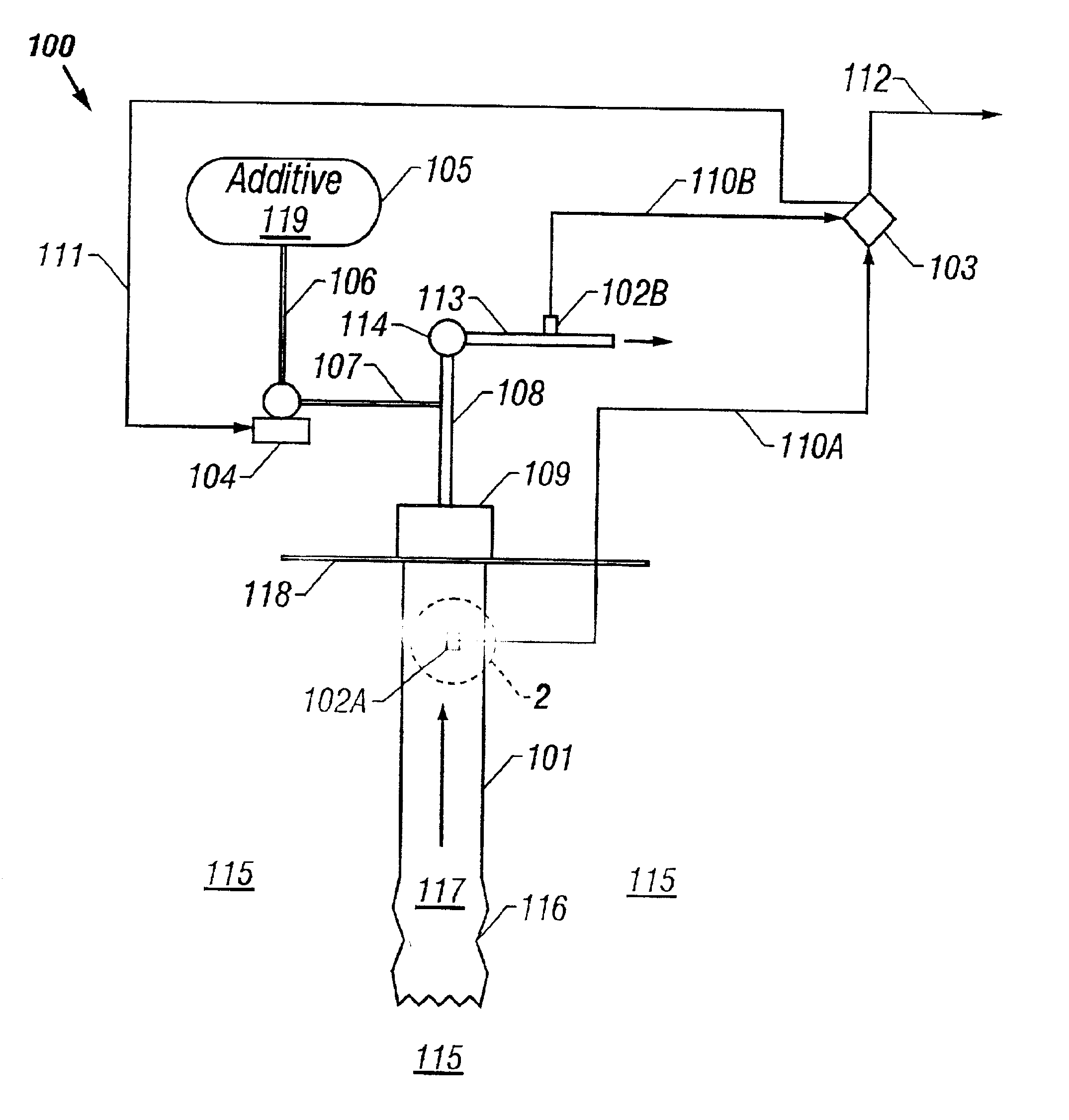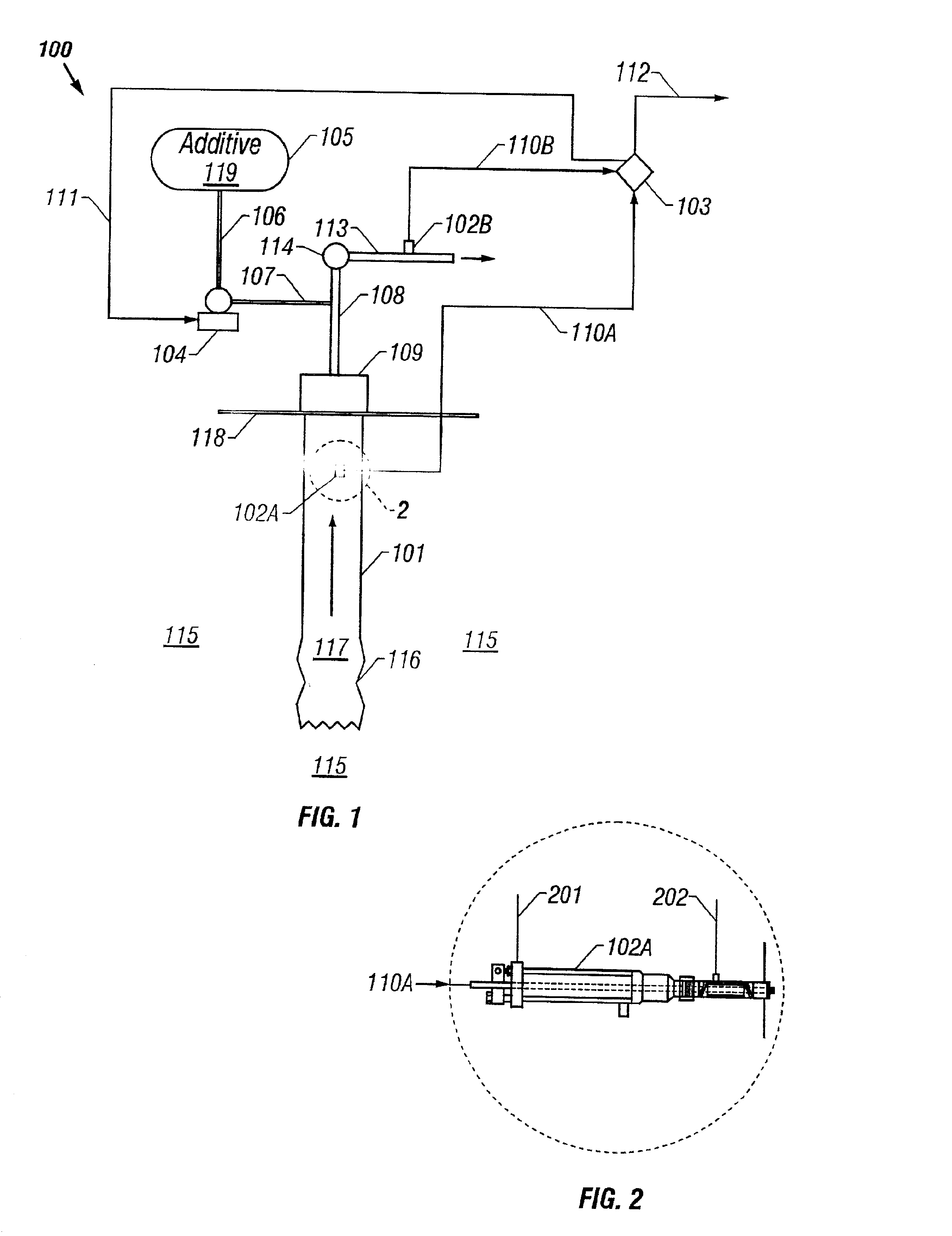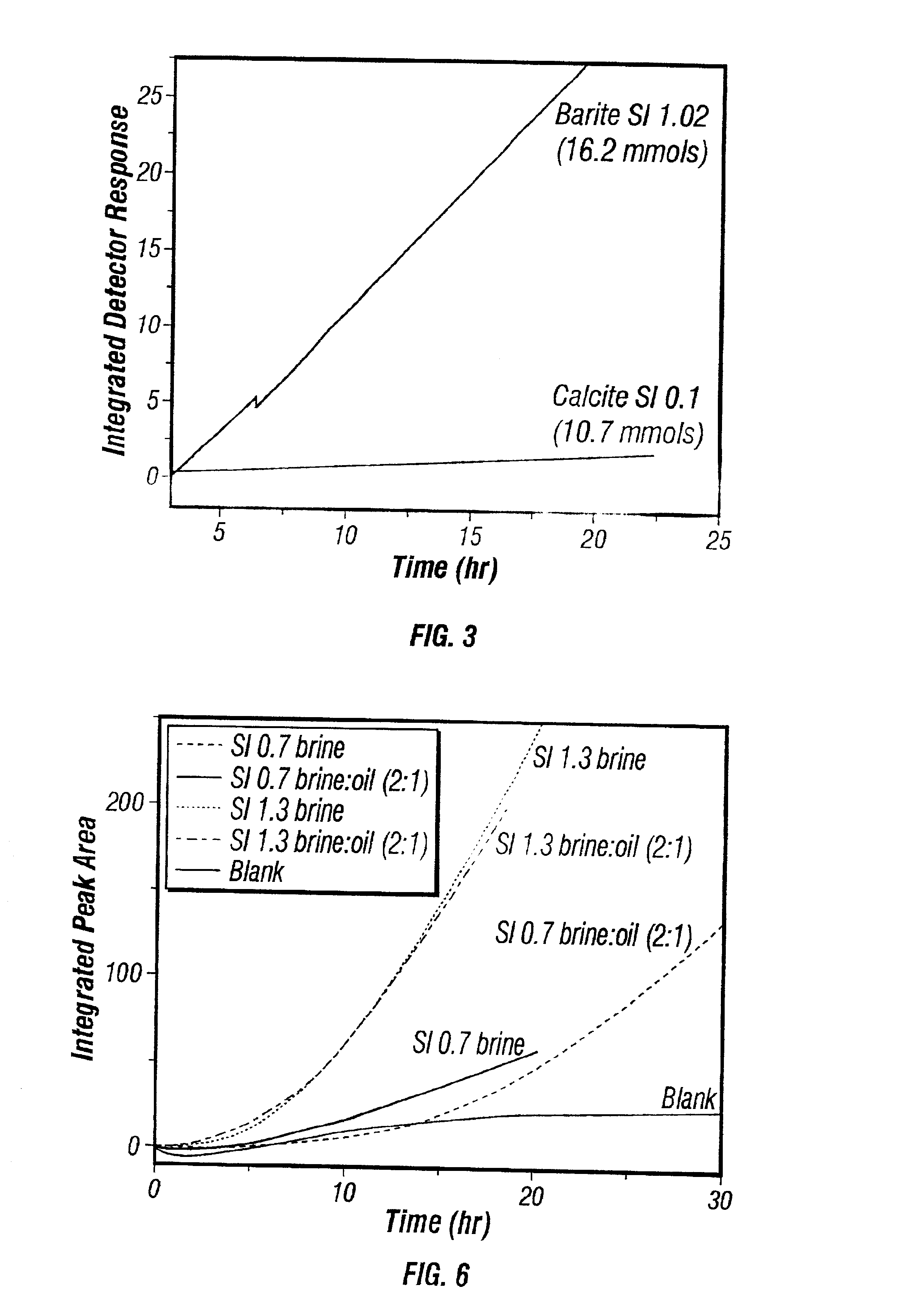Real-time on-line sensing and control of mineral scale deposition from formation fluids
a technology of formation fluid and real-time online sensing, applied in the field of real-time online sensing and control of mineral scale deposition from formation fluid, can solve the problems of scale precipitation in the downstream of the well equipment and topside equipment of the well site, slow down, and equipment failure of the wellsi
- Summary
- Abstract
- Description
- Claims
- Application Information
AI Technical Summary
Benefits of technology
Problems solved by technology
Method used
Image
Examples
example 1
[0056]A brine composition is divided into anion (AW) brine and cation (CW) brine where each brine contains only the respective scaling ions and sodium chloride. The pH of the AW portion of the brine is adjusted using glacial acetic acid to reach the desired point. CW water is mixed and used without further modification. All experimental data is generated at standard temperature and pressure conditions. The wavelength used for this experiment is 660 nm. Data is collected for both the probe and dynamic scale testing apparatus and is stored and analyzed at a sampling rate of 1 sample / sec.
[0057]FIG. 3 represents laboratory measurements utilizing a UV / Vis spectrophotometer and a fiber-optic ATR probe with de-ionized water as a reference. The scaling rate is determined for two unique brine solutions containing 16.2 mmol / L barium sulfate and 10.7 mmol / L calcium carbonate, respectively. These probe response differences shown in FIG. 3 reveal the sensitivity of the probe to different types o...
example 2
[0060]FIG. 4 demonstrates the correlation between the detector response rate and different scale inhibitor effectiveness for a given calcium carbonate scaling brine. These experiments correlate pressure increase in a flow loop with probe response are performed by coupling a dynamic scale testing apparatus with the probe.
[0061]Peristaltic pumps operating at a combined flow rate of 600 mls / hr, each individually pumped AW and CW through stainless steel tubing which is submerged in a water bath. In the water bath, both fluid lines (AW and CW) are combined and flowed through an {fraction (1 / 16)}″ (16 mm) OD stainless steel tubing whose ID was 1.6 mm and length was 1 m. A pressure transducer is located upstream from the AW and CW mixing point to measure the absolute pressure increase resulting from scale precipitation plugging the flow line. The probe is placed at the outlet of the tubing wherein the combined AW and CW are flowed over the probe tip. The scale inhibitors shown in FIG. 4 ar...
example 3
[0063]Example 3 is performed substantially identically to Example 3 except that a single scale inhibitor is used at different concentrations.
[0064]The data for both the pressure and the probe response is displayed in FIG. 5.
PUM
 Login to View More
Login to View More Abstract
Description
Claims
Application Information
 Login to View More
Login to View More - R&D
- Intellectual Property
- Life Sciences
- Materials
- Tech Scout
- Unparalleled Data Quality
- Higher Quality Content
- 60% Fewer Hallucinations
Browse by: Latest US Patents, China's latest patents, Technical Efficacy Thesaurus, Application Domain, Technology Topic, Popular Technical Reports.
© 2025 PatSnap. All rights reserved.Legal|Privacy policy|Modern Slavery Act Transparency Statement|Sitemap|About US| Contact US: help@patsnap.com



